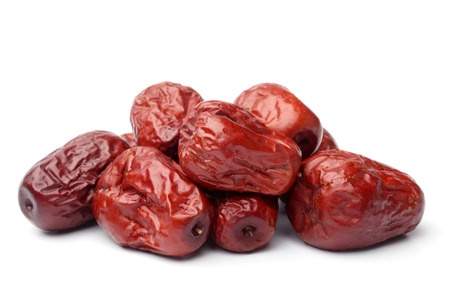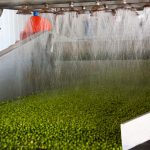
The Zizyphus species of which there are about 40 are all thorny, small to medium sized trees and belong to the same family as Sea Buckthorns (Rhamnaceae). All members of the family have been used to treat various diseases which include the following:-
- antioxidant value (Kou et al., 2015)
- anti-allergic (Jiang et al., 2019)
digestive disorders, weakness, liver complaints, obesity, urinary troubles, diabetes, skin infections, loss of appetite, fever, pharyngitis, bronchitis, anaemia, diarrhea, and insomnia.
Possibly the most important species of the family is Jujube (Zizyphus jujuba Miller.) (syn. Z. sativa Gaertner, Z. vulgaris Lam.). It is a popular fruit and has a distinctive and attractive taste with good nutritional value. A common cultivar grown in China and Taiwan is Lingwuchangzao. (Liu et al., 2018). A number of reviews cover its medical benefits (Gao et al., 2013).
History Of The Fruit
The fruit is known as the Chinese Date, Chinese Jujube or even Red Date. In the ancient Chinese book on herbal medicine known as the Huangdi Neijing (475−221 BC), the fruit of Z. jujuba was considered as one of five valuable fruits in China. A little later the Shennong Bencao Jing (300 BC−200 AD) recorded the date as one of the superior herbal medicines having the ability to prolong our life-span by “nourishing blood, improving quality of sleep and regulating digestive system”.
Harvesting
The fresh fruit is a typical climacteric. It usually means that once it is harvested, respiration rises with rapid aging and nutritional losses. As well as a high respiratory rate, the fruit is often easily damaged which means that deterioration in quality following harvesting is very common. Rotting, discoloured fruit in markets is often seen. Attempts to reduce the high level of losses in the fruit are being explored (Islam et al., 2022) .
Culinary Value
The dried immature and mature dates are regularly eaten.
References
Gao, Q. H., Wu, C. S., & Wang, M. (2013). The jujube (Ziziphus jujuba Mill.) fruit: a review of current knowledge of fruit composition and health benefits. Journal of Agricultural And Food Chemistry, 61(14), pp. 3351-3363.
Han, B. H., & Park, M. H. (1986). In: Folk medicine: The Art And Science. Washington: The American Chemical Society. Pp. 206
, , , , , , & (2018). Transcriptomic and gene expression changes in response to postharvest surface pitting in ‘Lingwu Long’ jujube fruit. Horticulture, Environment, and Biotechnology, 59(1), pp. 59–70 (Article)



Leave a Reply